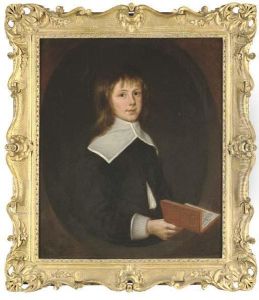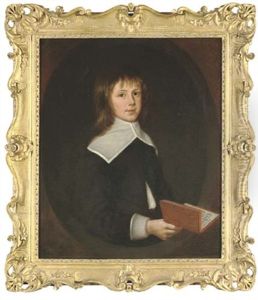Henry Gibbs Paintings
Henry Gibbs, not to be confused with any contemporary artists, was an English painter who lived during the 17th century, a period that was marked by significant political, religious, and social upheaval in England, including the English Civil War and the Restoration. Born in 1631, Gibbs' life and career were situated in a time when the art world was experiencing considerable changes, and the Baroque style, which was popular across Europe, was starting to influence English art.
Gibbs is known for his portraits, which reflect the artistic trends and fashions of his time. His work, however, is not as widely documented as that of some of his contemporaries, like Sir Peter Lely or Godfrey Kneller, who were the leading court portraitists of the era. As such, specific details about his artistic training and the breadth of his work remain somewhat obscure. Despite this, it is believed that he was active as a painter from around the 1650s until his death in 1713.
During his career, Gibbs would have witnessed the shift from the more somber and introspective art of the Puritan Commonwealth to the grander and more opulent styles that came with the Restoration of Charles II in 1660. The art market in England was growing, and the demand for portraiture was increasing among the aristocracy and the emerging wealthy middle class. Gibbs' portraits would have catered to this market, capturing the likeness and status of his subjects.
It is important to note that historical records from this period do not always provide a complete picture of an artist's life, especially for those who were not in the very top tier of the profession. Therefore, much of Gibbs' biography, including his artistic education, the patronage he received, and the full scope of his influence, remains shrouded in mystery. Despite the lack of extensive historical records on Gibbs, his surviving works contribute to our understanding of the portrait style and aesthetic preferences of his period.
Henry Gibbs passed away in 1713, leaving behind a body of work that contributes to the tapestry of 17th-century English portraiture. While he may not be as well-remembered as some of his more famous contemporaries, his paintings offer insights into the lesser-known artists working during a transformative period in English art history.

